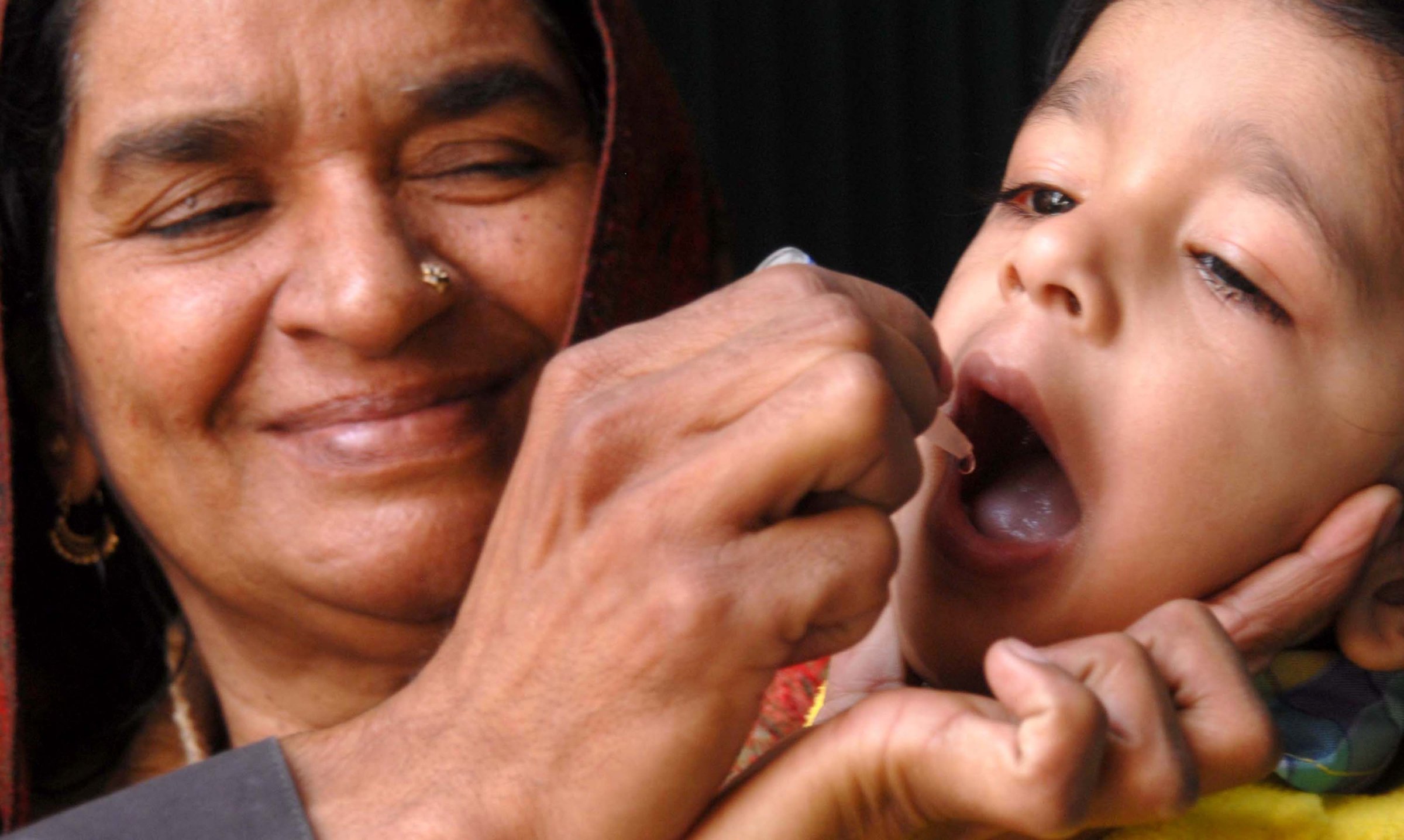
Epidemiology can be all about geography—and that’s especially true when it comes to polio. If you live in the U.S., where polio was eradicated in 1979, the specter of the disease has faded almost entirely, though pockets of infections can occur among the unvaccinated. In Pakistan, however, things are moving in precisely the opposite direction, and have been for a while now.
One of only three countries in the world where polio remains endemic (the other two are Nigeria and Afghanistan), Pakistan had been close to joining the world’s polio-free nations, with only 58 infections in 2012. But thanks to bans on vaccinating—and deadly attacks on polio fieldworkers—by the Pakistani Taliban, the caseload rose to 93 in 2013. In 2014, the total reached 99 by July 18—a figure all the more alarming compared to this point last year, when there had been just 21 cases.
“It’s a scary number,” says Aziz Memon, Pakistani chairman of Rotary International’s polio eradication campaign. “Children in North Waziristan have been trapped for three and a half years without a drop of polio vaccine, and that’s what’s causing this.”
The folks at Rotary know what they’re talking about. Since launching their polio eradication effort in 1985, they have been responsible for the vaccination of 2 billion children in 122 countries. Along with the World Health Organization, UNICEF, The Gates Foundation and others, they have helped slash the global infection rate from 350,000 cases per year in 1988 to 416 in 2013.
That’s indisputably good news, but polio is an exceedingly sneaky virus, with 200 symptom-free carriers for every one case of the disease. That fact, combined with the anti-vaccine forces in Pakistan, not to mention the porous borders cause by war and unrest in the overall region, has caused the disease to leak out from the three endemic countries, with stray cases turning up in Equatorial Guinea, Iraq, Cameroon, Syria, Ethiopia, Somalia and Kenya. In a handful of other countries, the virus has been detected in sewage, but it has not led to any cases of the disease—yet.
It’s Pakistan though that’s considered ground zero, and Rotary has announced that it’s now deploying some very simple weapons in what has always been a village-to-village, door-to-door battle. To improve surveillance and tracking—a maddeningly difficult job in a country in which so many people live off the communications grid—Rotary has distributed hundreds of cell phones to midwives who circulate through communities, canvassing residents to find out who has received the vaccine and who has been overlooked. Information on the unvaccinated kids—the “missing children” in the fieldworkers argot—is entered into the phones and uploaded to a central spreadsheet, allowing later vaccinators to target their efforts more precisely.
“The midwives also track pregnant mothers,” says Memon. “And when their children are born they can continue to maintain complete health records, not just for polio but for other vaccines and basic health care as well.”
Rotary has also worked with The Coca-Cola Company to build what’s known as a reverse osmosis water plant—essentially a sophisticated filtration facility—in the town of Malin, within the city of Karachi. Polio is a disease spread almost entirely by human waste, and once it leeches into the water system it can spread nearly anywhere. The Malir plant, which was constructed near a school to give polio-age kids the first access to the newly filtered water, is a relatively modest one, with just 20,000 gal. (76,000 liters) of clean water on hand at any one moment, and cost only $40,000 to build. But as a pilot project it represents a very good start. “We can’t build a massive plant like the government can,” says Memon. “This is a small plant for a small community.”
One thing, paradoxically, that’s working in the vaccinators’ favor is the increased number of displaced people in Pakistan. A recent push by the Pakistani military to flush the Taliban from its safe havens has broken the vaccination blockade, and already 350,000 children have received at least one dose of the polio vaccine. But 1.5 million refugees are scattered around the country. Rotary has dispatched field workers to refugee camps and transit points to identify the children and few adults who need the polio vaccine and administer it on the spot.
“The government did not have any idea about what the numbers of displaced people would be,” says Memon. In the refugee camps, he adds, there are at least 40,000 pregnant women, whose babies will have to be vaccinated shortly after birth.
The diabolical thing about polio—and indeed any disease science hopes to eradicate—is that even one case is too many. As long as any wild poliovirus is out there, everyone needs to be protected. It is only when the last scrap of virus has been found and snuffed, that the protective push can stop. That has happened once before in medical history—with smallpox. In the case of polio, it’s tantalizingly close to happening again.
More Must-Reads from TIME
- Why Biden Dropped Out
- Ukraine’s Plan to Survive Trump
- The Rise of a New Kind of Parenting Guru
- The Chaos and Commotion of the RNC in Photos
- Why We All Have a Stake in Twisters’ Success
- 8 Eating Habits That Actually Improve Your Sleep
- Welcome to the Noah Lyles Olympics
- Get Our Paris Olympics Newsletter in Your Inbox
Contact us at letters@time.com